Disc brakes or V-brakes?
Wondering which one is ideal for your cycle?
You're not the only one!
This is one of the most debated choices for riders, especially if you're looking to buy an e-cycle that matches your riding needs. Let's break things down in simple terms, so you can confidently choose what's right for your ride.
At EMotorad, we're big fans of speed, adventure, and the occasional detour. But when it's time to stop, we want brakes that don't mess around.
That's why we're putting disc brakes and V-brakes head-to-head in this comparison—so you don't have to keep second-guessing your choice.
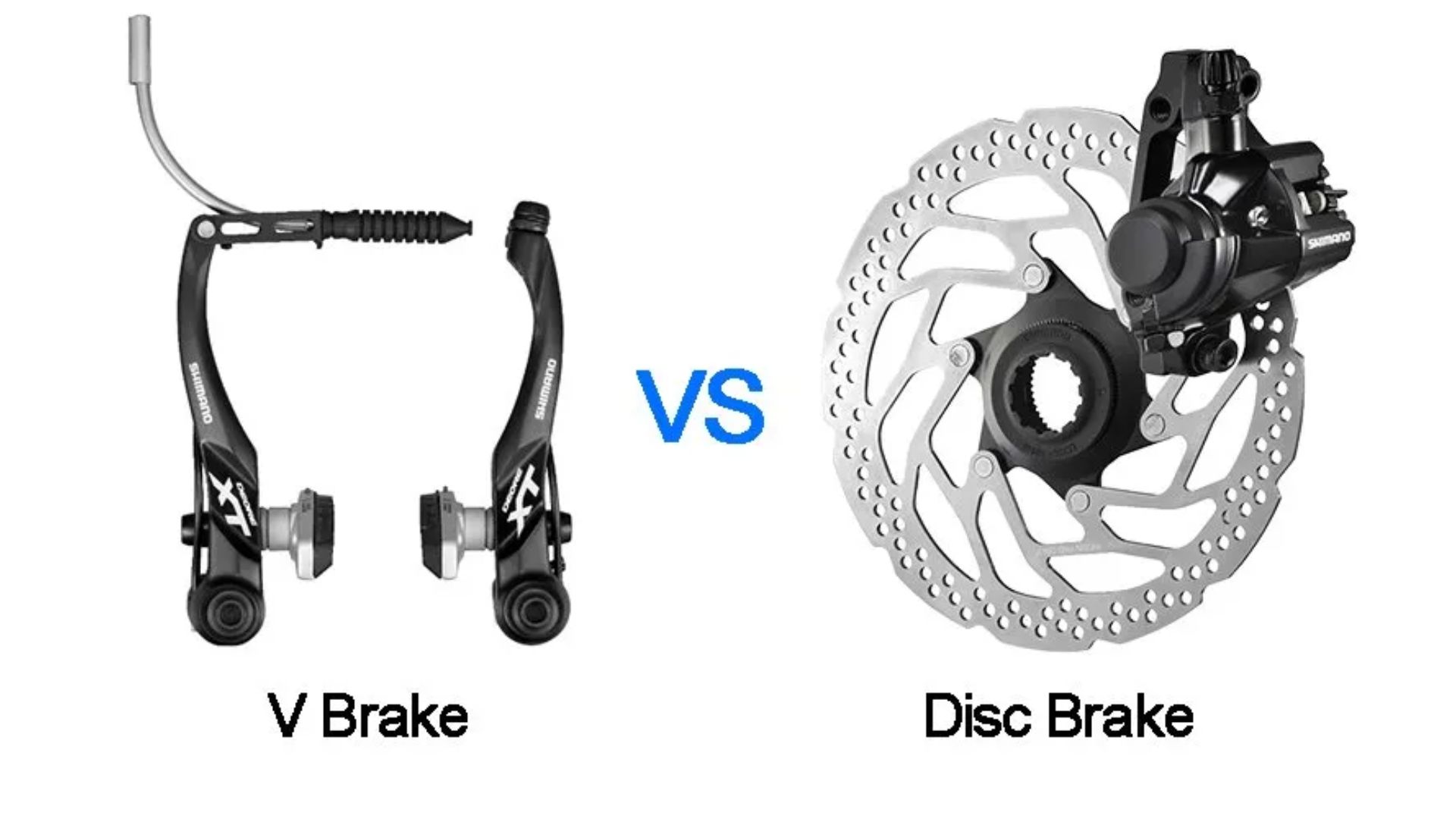
Getting to Know V-Brakes
You've probably seen V-brakes before—even if you didn't know their name. They're the brakes that clamp onto the sides of the wheel rim when you squeeze the lever.
You'll find them on many older bikes, as well as some newer city cycles.
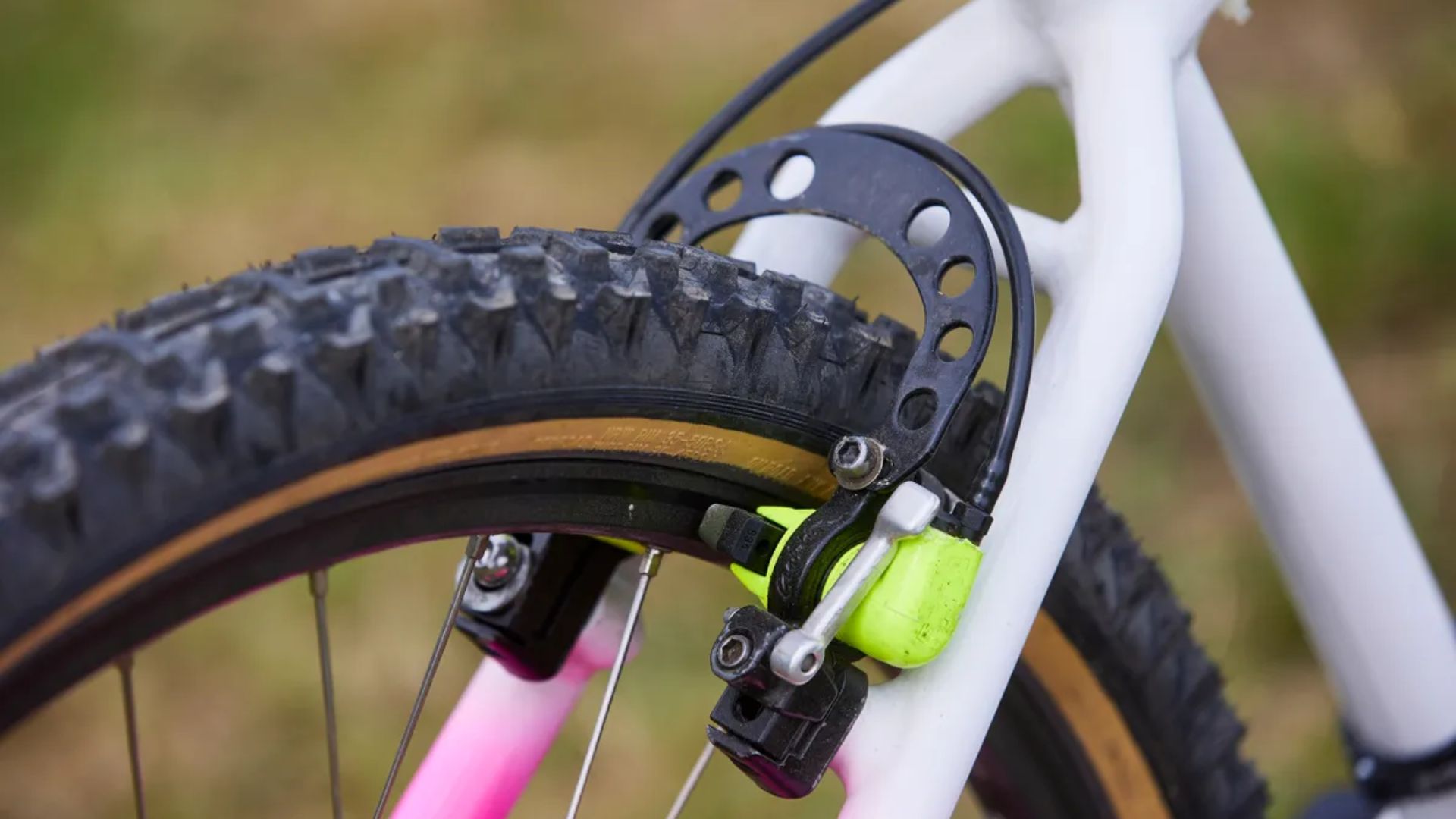
Why People Like V-Brakes
- Light on the bike, light on the wallet: V-brakes don't weigh much, and they're easy on the budget.
- Straightforward maintenance: No complicated setup. You can replace or adjust them at home with a basic tool kit.
- Great for everyday riding: If you travel on routes that are mostly dry and smooth, these brakes do the job just fine.
The Drawbacks
- Not rain-friendly: Wet rims make V-brakes less reliable. Stopping distance increases, and that's not ideal when the roads are slick.
- Rim damage over time: Since the pads press directly on the wheel rim, they wear it down little by little.
- Limited power on rough terrain: V-brakes don't have quite the same stopping force for off-roading or steep hills.
All About Disc Brakes
Now for the modern favourite: disc brakes.
These use a metal rotor attached to the wheel hub and a calliper that grips the rotor when you hit the brake lever. Instead of stopping the wheel by squeezing the rim, disc brakes stop it from the centre.
You'll often find them on mountain bikes and e-bikes because they offer stronger, more consistent braking.
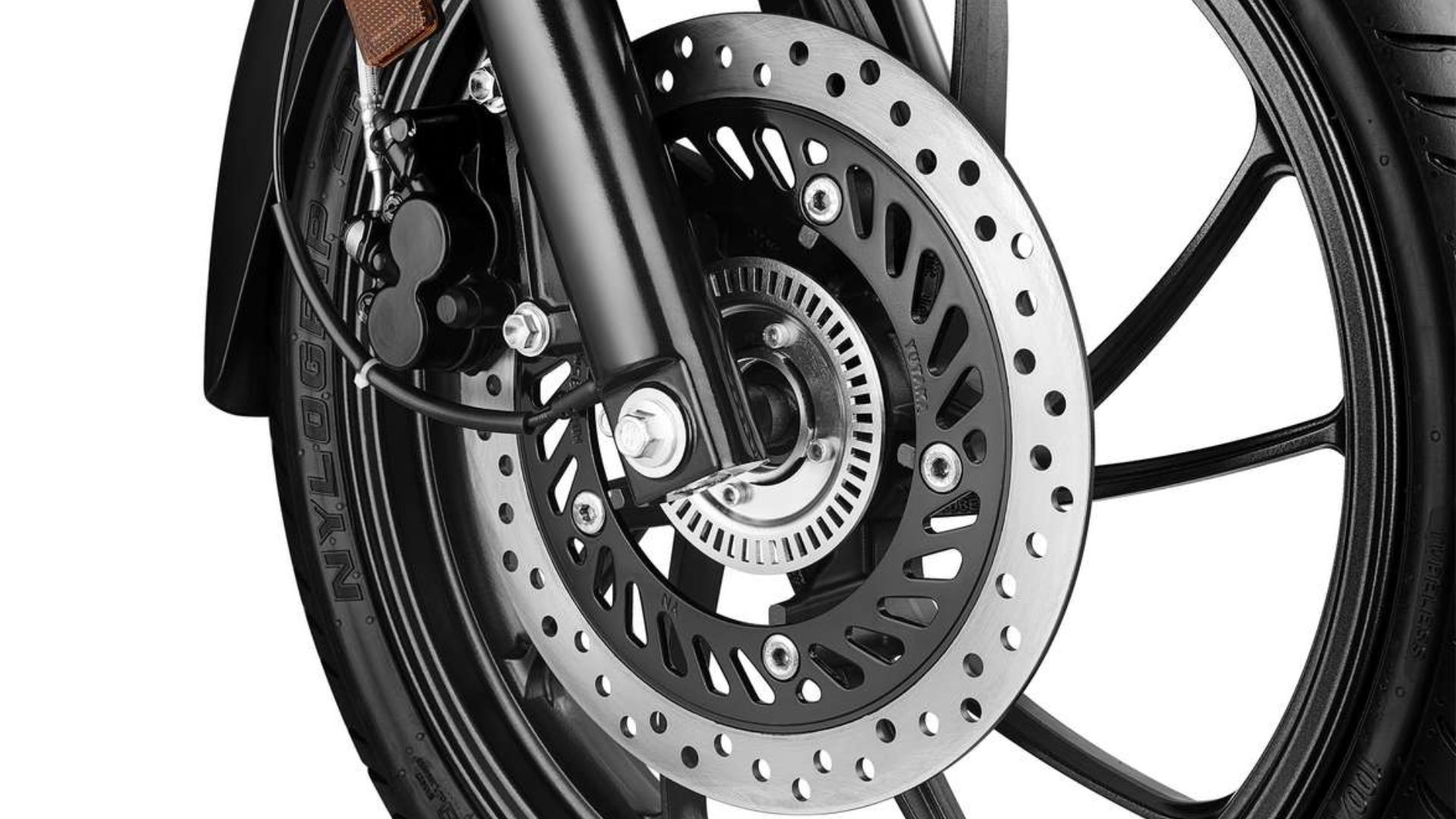
What Makes Them Awesome
- Brakes that don't care about the weather: Disc brakes work well in rain, mud, or dust. The rotor is away from the rim and stays cleaner, so the braking remains sharp.
- Better control and shorter stops: Whether you're flying downhill or weaving through traffic, disc brakes respond fast and feel more predictable.
- No rim wear: Since there's no contact with the wheel rim, your wheels last longer.
- Stronger for heavier bikes: E-cycles tend to weigh more, especially with batteries and motors. Disc brakes handle that weight better than V-brakes.
A Few Downsides
- Heavier system: Not a dealbreaker on an e-cycle, but it's worth noting if you're a weight-conscious rider.
- More parts, more cost: Replacing or repairing disc brakes (especially hydraulic ones) can cost more than basic V-brake components.
- Maintenance takes know-how: Adjustments can be trickier, and some riders prefer a mechanic's help, particularly with hydraulic systems.
Which One's Right for You?
Choosing between the two comes down to how and where you ride.
V-brakes could be a better choice if:
- You mainly ride on flat, dry roads
- You're just starting out and want a simple, low-cost option
- You prefer to do your own maintenance and repairs
Disc brakes are likely the better fit if:
- You ride in all weather, or take your e-cycle off-road
- You value performance, safety, and consistent braking
- Your bike is heavier or built for higher speeds
Why We Use Disc Brakes at EMotorad
Here's the thing: e-cycles are fast, powerful, and built for a variety of terrains—and that demands braking systems that match up.
That's why every e-cycle we build comes fitted with disc brakes as standard.
When the ride gets tough, disc brakes deliver much better control, safer stopping, and are overall much more reliable.
We even offer hydraulic disc brakes for riders who want even more precision and power in their braking setup.
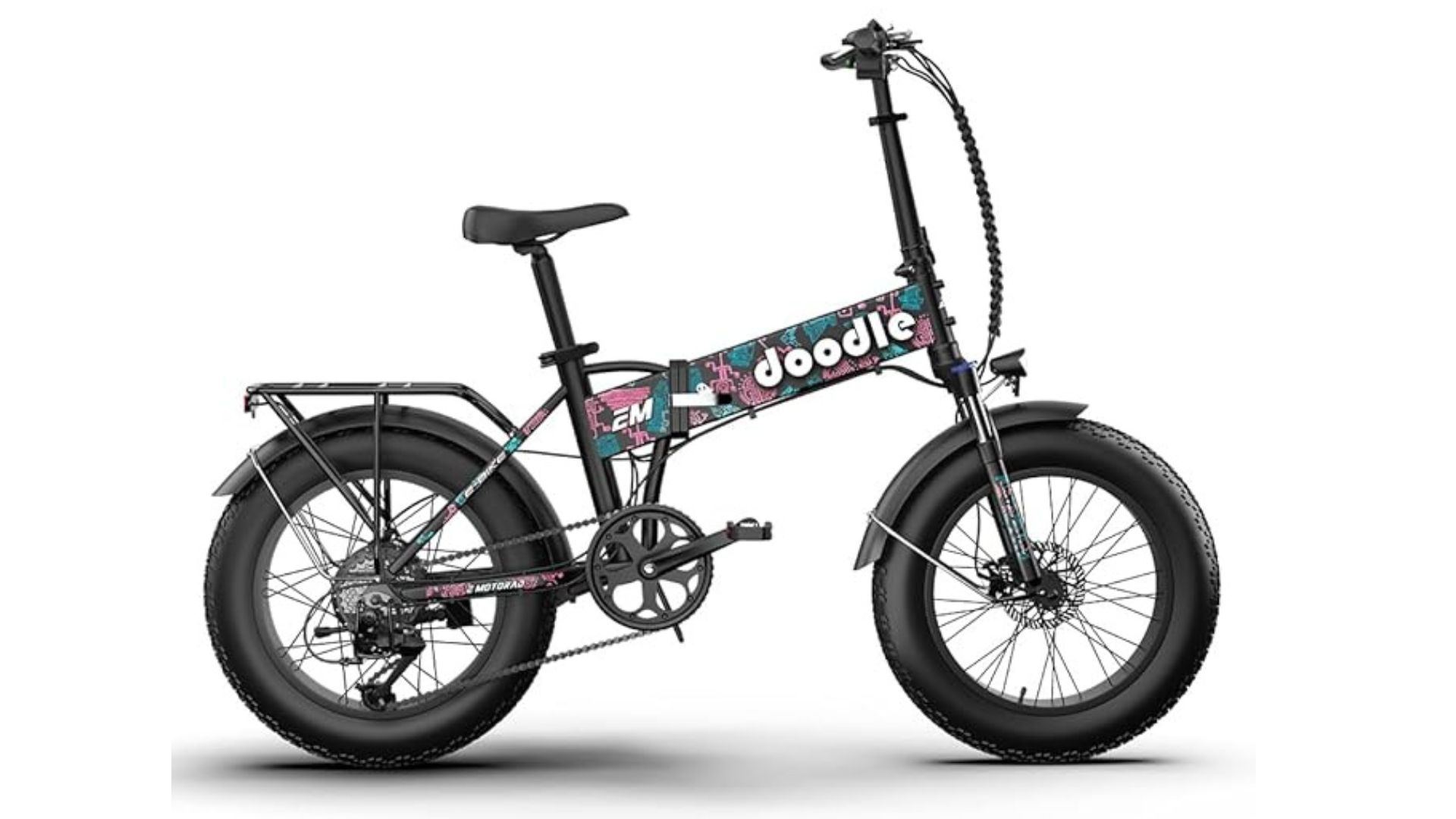
Final Thoughts
By now, you are well aware that the right braking system isn't just about stopping—it's about how confidently you ride, whether you're cruising through city traffic or flying down a trail.
V-brakes still have their place, especially for light use in fair weather. But if you're looking for consistent, all-weather performance, disc brakes are worth the extra investment.
At the end of the day, your ride should feel like it's made for you.
And your brakes?
They should feel like they've got your back, every time you squeeze that lever.
Ride safely. Ride bold. And may your brakes always be ready when you need them.


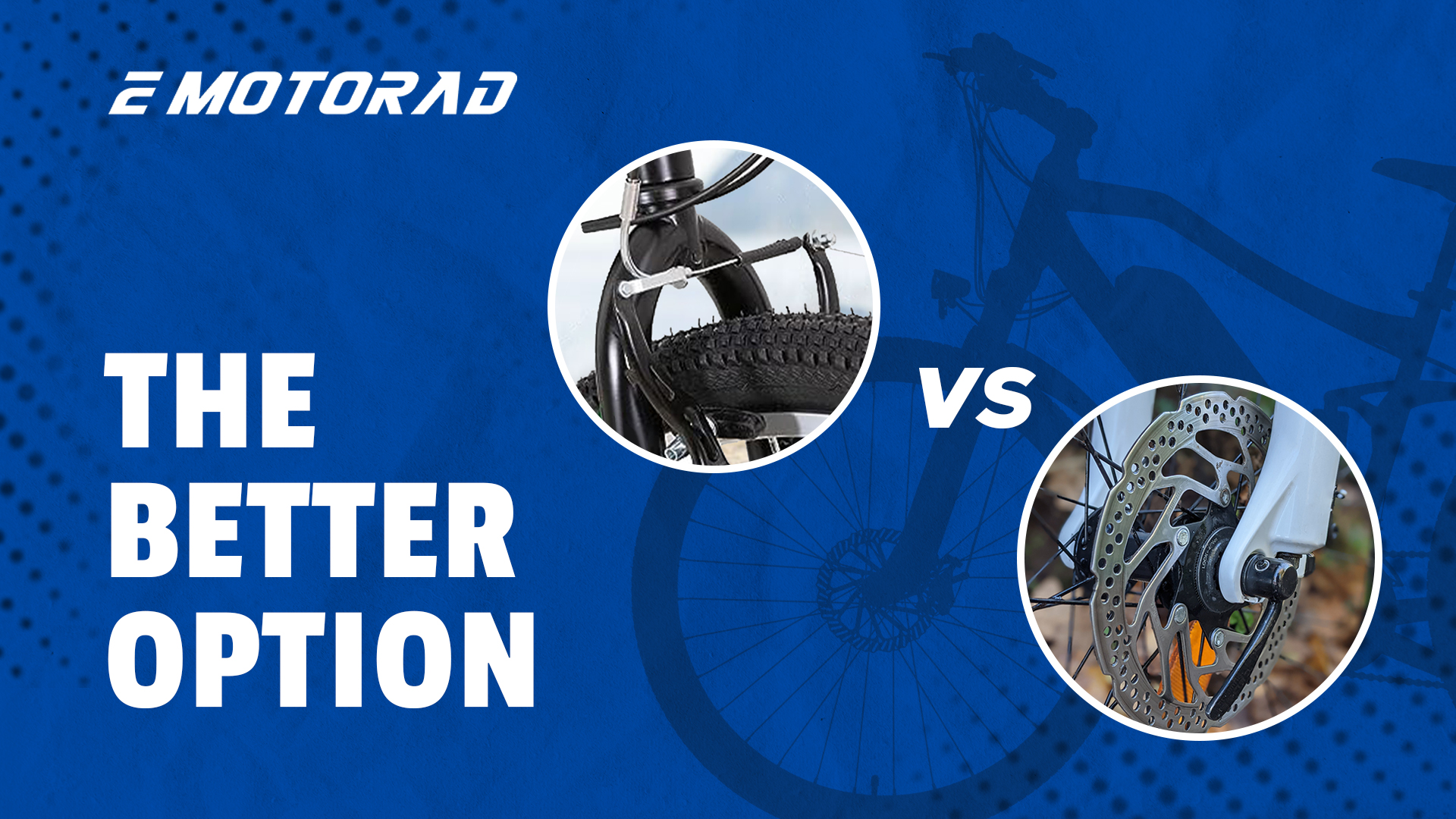
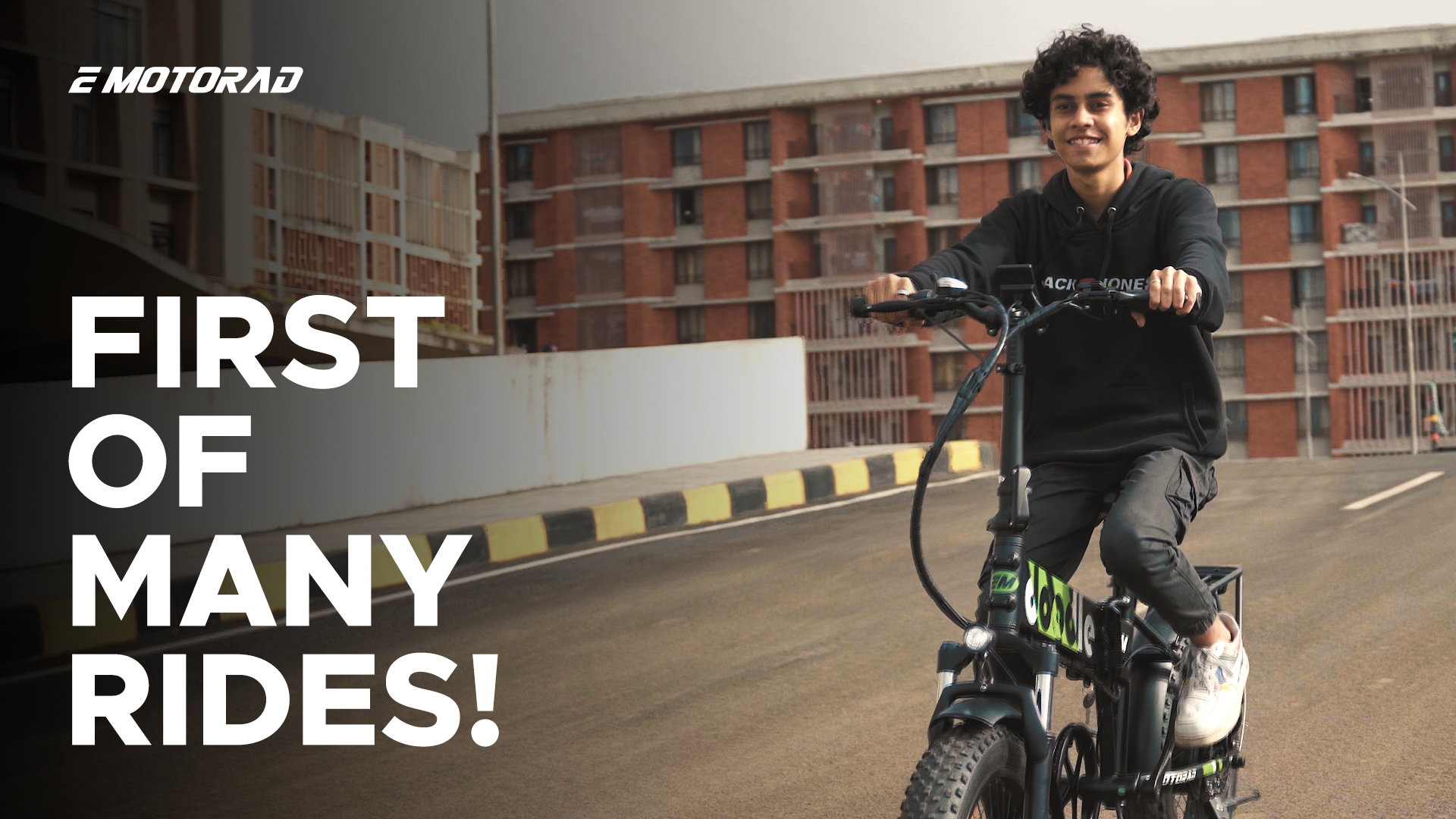
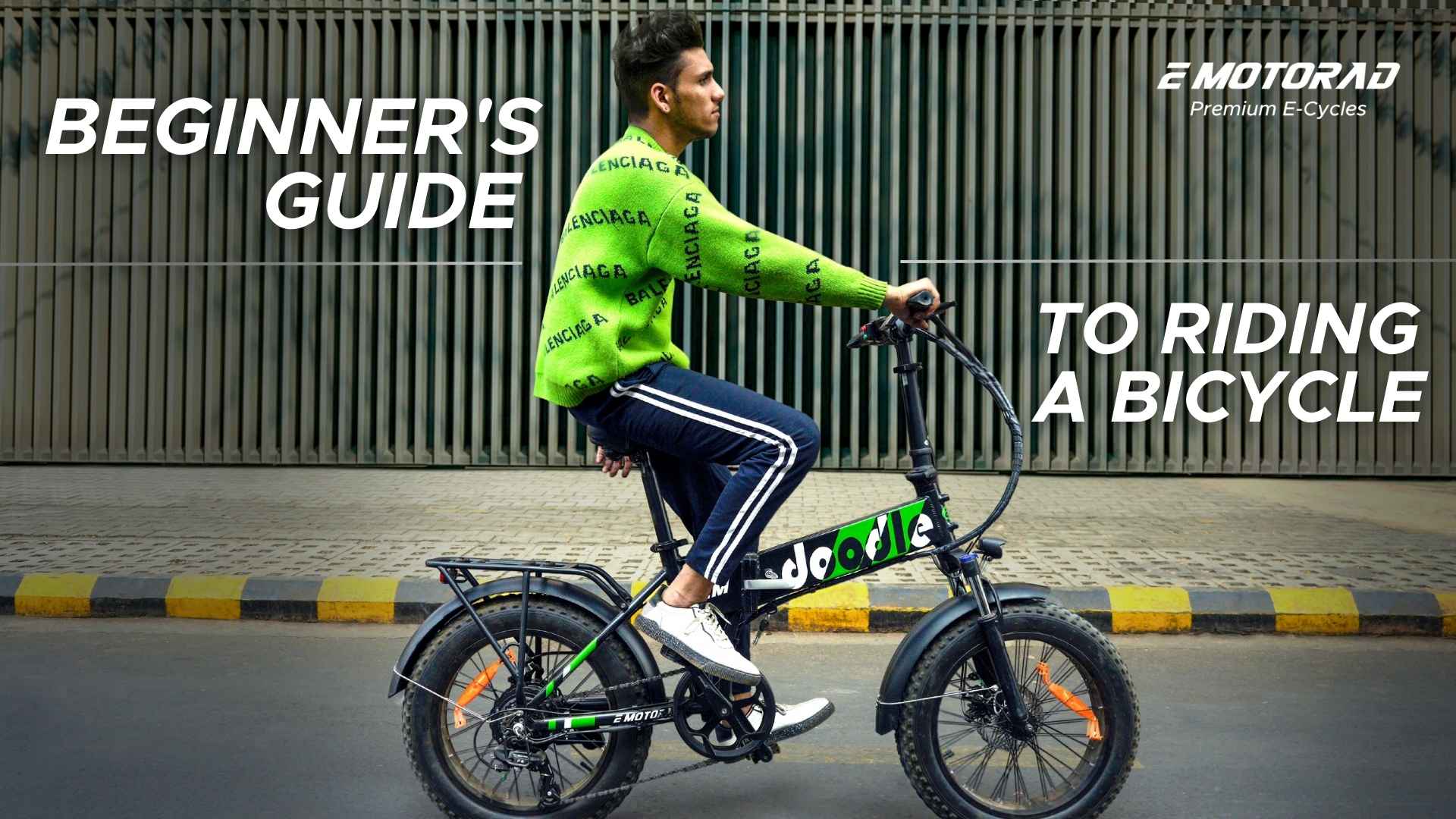
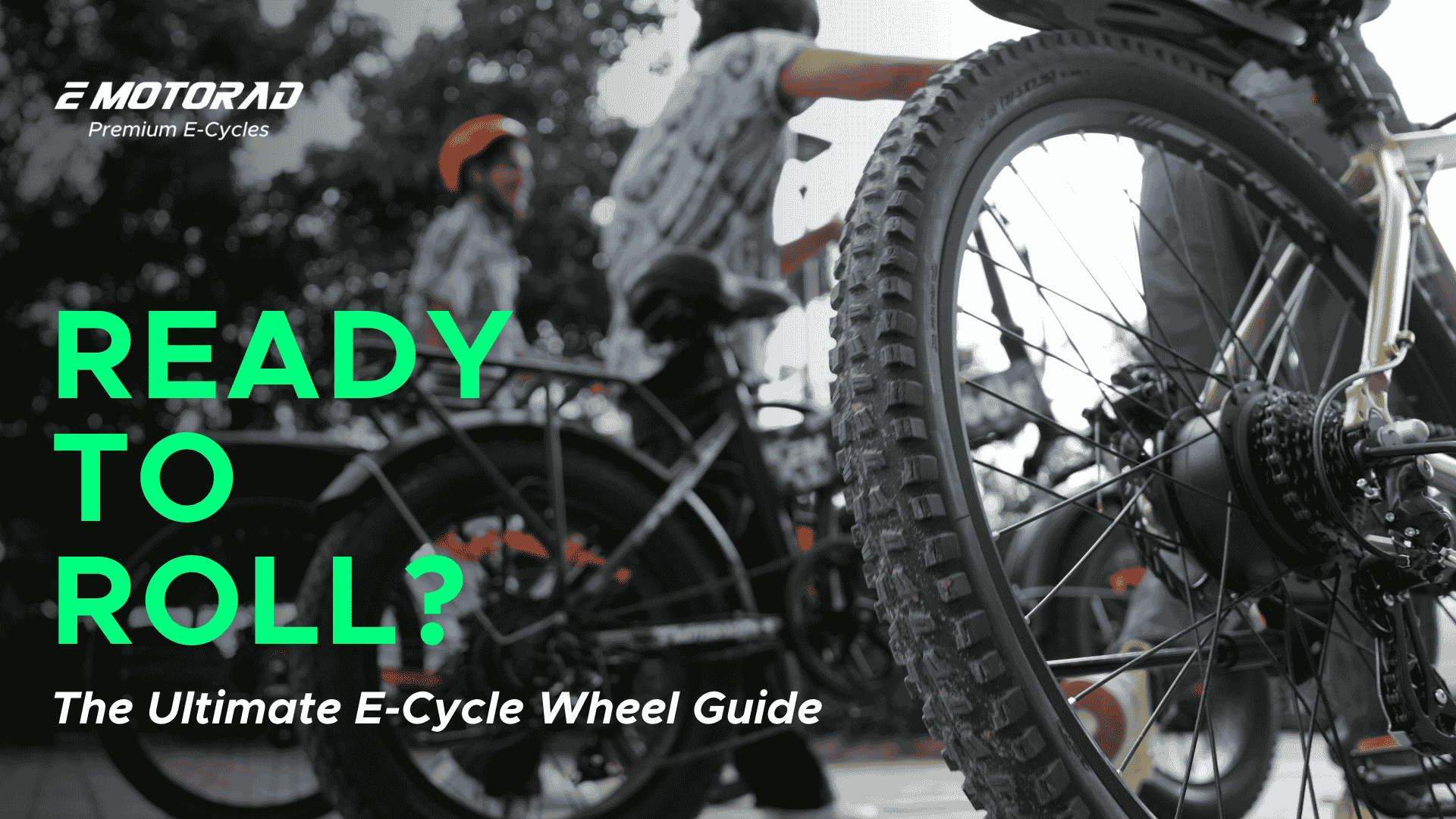
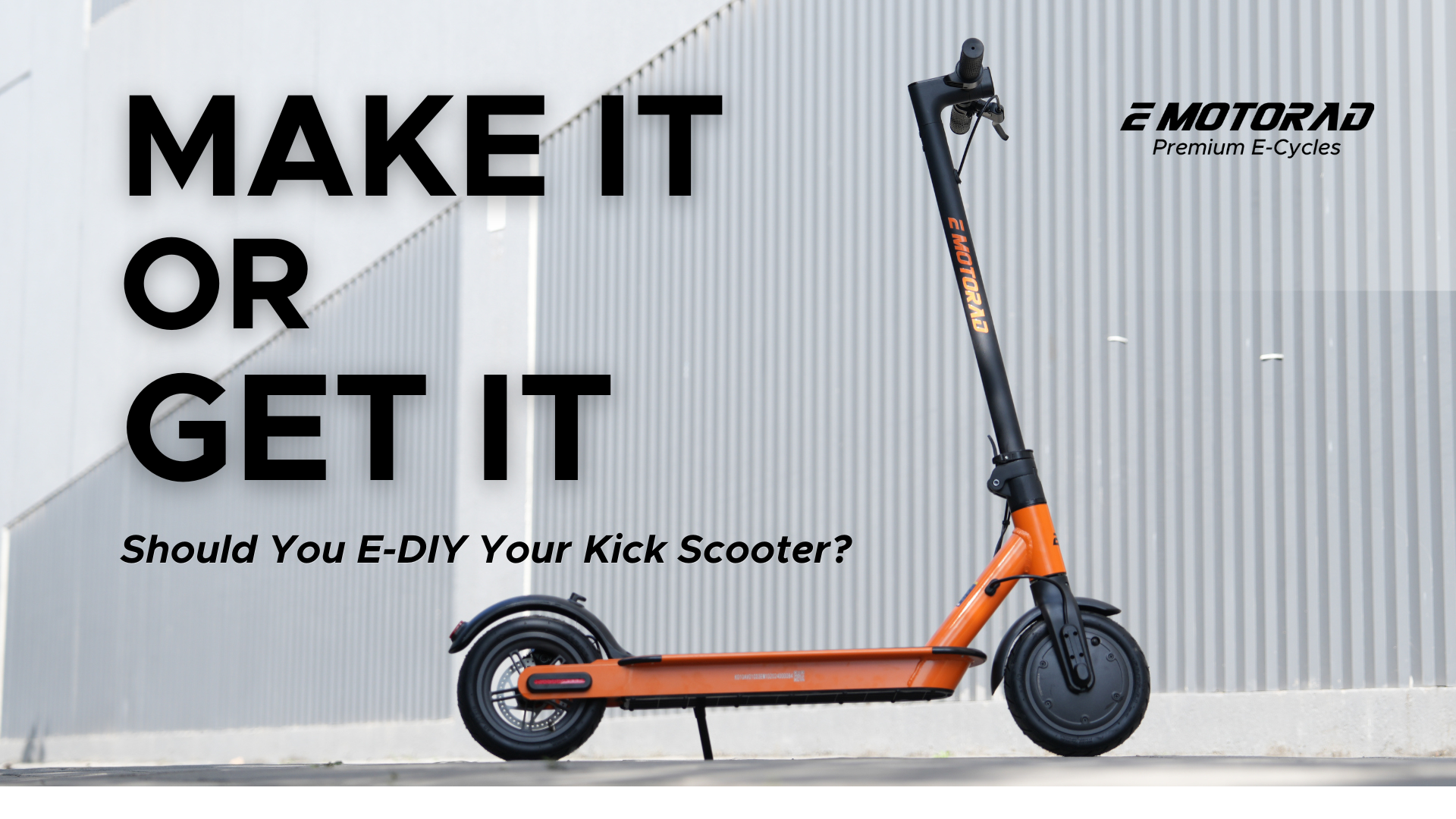
About Us
Blogs
News
EM Stories